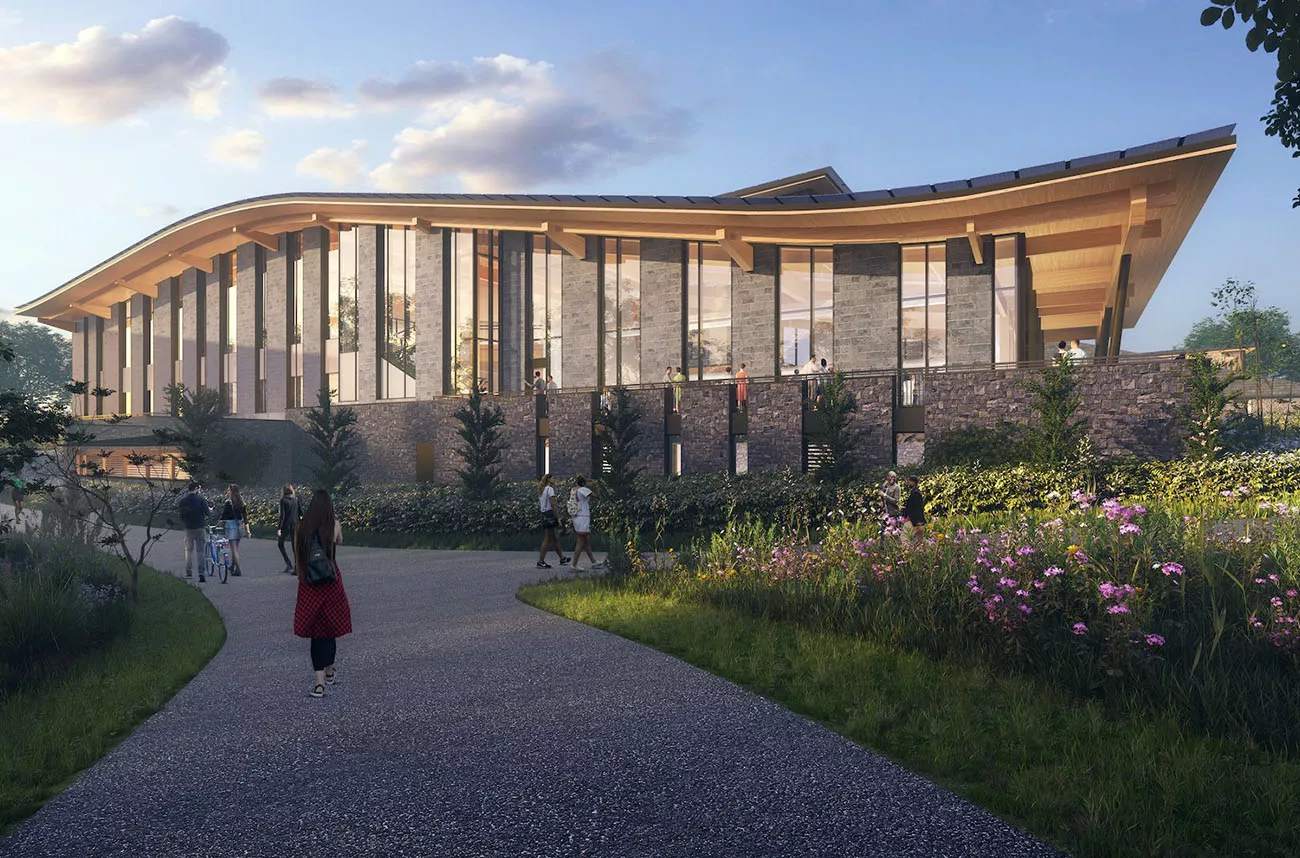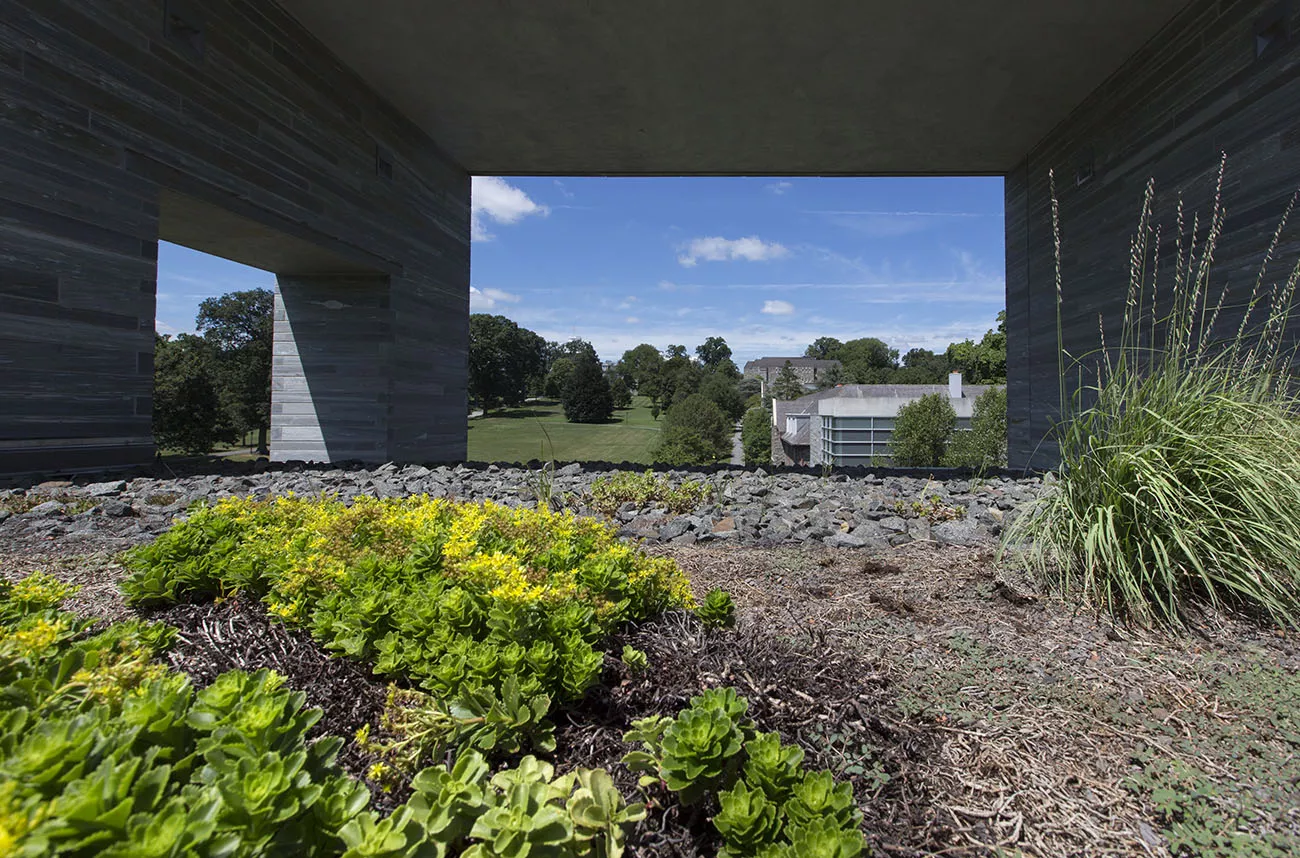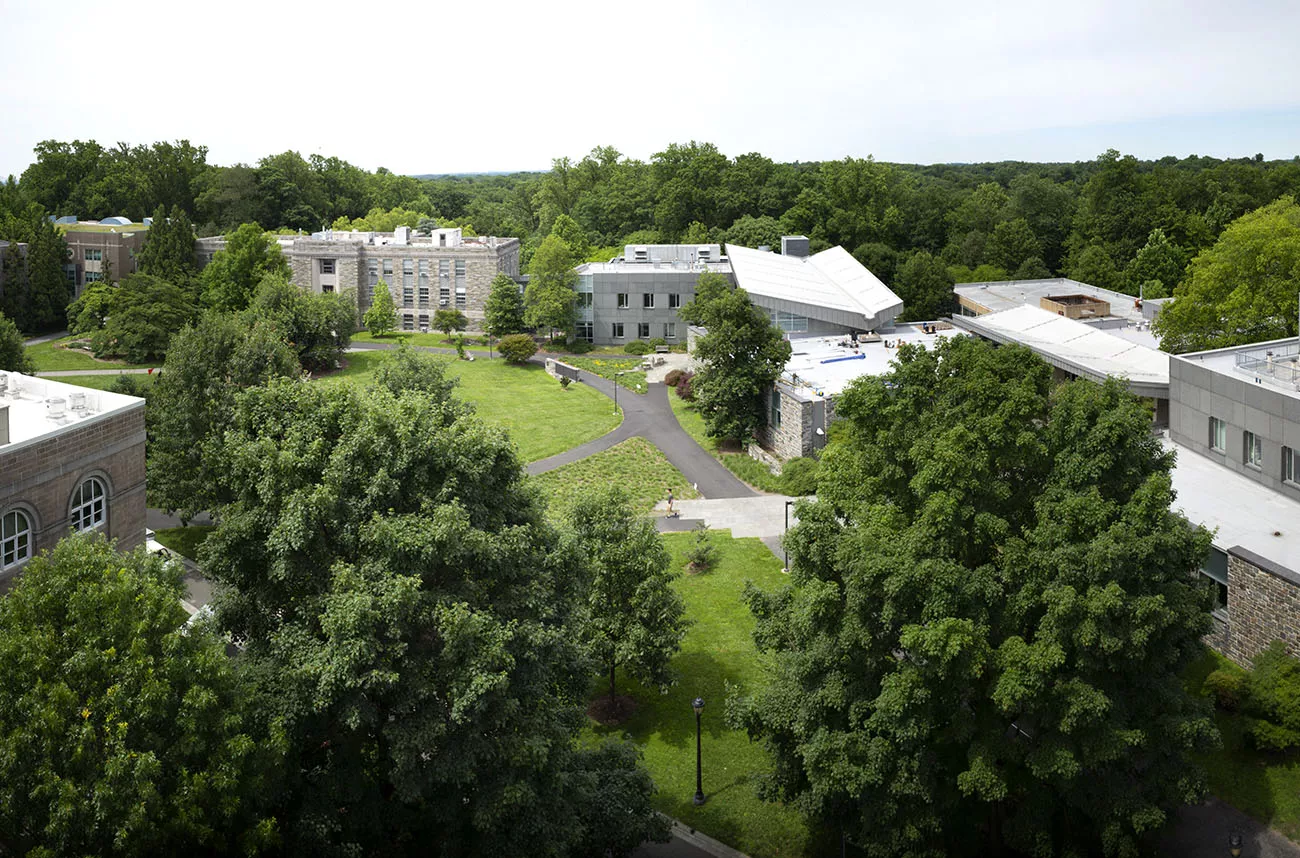Putting our smallest footprint forward.
Visionary leadership and decisive action are vitally important to reducing the impact of the climate crisis and realizing a more sustainable future. In 2012, the College committed to achieving carbon neutrality no later than 2035. To get there, Swarthmore will need to eliminate, reduce, or offset all carbon emissions in the College’s greenhouse gas inventory.
The College’s ambitious energy plan, To Zero By Thirty-Five (20X35), formerly known as the Roadmap to Zero Carbon, charts a transformative path to efficient, combustion-free energy on campus. By 2035, buildings across campus will be connected to a new heating and cooling geoexchange system. Powered by renewable energy, the process extracts heat from buildings during the summer and stores it underground for use in the winter — all while producing zero carbon emissions. Together with ongoing energy efficiency improvements across campus buildings, onsite solar and off-site renewable energy procurement, and a standby electricity generation plant, the College is positioned to significantly reduce our carbon emissions and reach carbon neutrality by 2035.
What's in front of us matters.
Since its founding, Swarthmore has had a clear view of our responsibility to the natural environment. The College is continuing to take decisive action through To Zero By Thirty-Five to limit the effects of the climate crisis, which has already deeply affected people and places across the globe — particularly the underrepresented and underserved. We also hope to inspire others, both individuals and institutions, to act in the face of this crisis that is bigger than any one of us. By 2035, we hope our carbon-free campus will be the new standard, not the exception, among institutions within higher education and beyond.






